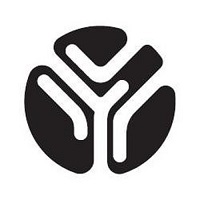(Total Views: 481)
Posted On: 06/17/2022 8:33:27 PM
Post# of 158167
Ohm wrote:
"One of the problem with single target immune inhibitors is that at larger doses where they would be most effective they could shut down the action of the target completely which could have negative effects. Those effects of completely stopping a component of the immune response can rise to the level of increased incidence of lymphoma and leukemia."
Read More: https://investorshangout.com/post/view?id=642...z7WWBsdTwL
_________________
So how your hypothesis explain the higher effectiveness of 700 ml dozing in mTNBC and Covid trials? Also what would you say about this hypothesis by Jay from YMB?
_______________
"I am not a Scientist but I do read up on a lot of medical studies. It would really be great if there was someone on this board that can explain what I am about to say.
Apparently, there are 2 major inflammatory chemokines on T-Cells. One is CCR5 (RANTES) and the other is CXCR3. They both part of T-Cell migration during inflammatory states.
CCR5 binds to CCL5 and this is the reason Leronlimab is so effective in reducing inflammation.
However, the other big inflammatory chemokine is the connection CXCR3 makes by either binding to CXCL9, CXCL10, or CXCL11. Unlike CCL5 and CCR5 having their specific connection. CXCR3 has 3 different receptors to bind to. Maybe CXCR3 is the bigger proinflammatory chemokine.
In various studies for all inflammatory components in most diseases including autoimmune conditions...the two proinflammatory chemokines that frequently appear are CCR5 and CXCR3.
Maybe the resolution to a lot of these persistent inflammatory conditions including NASH....is that blocking CCL5 is not enough. Is it possible that despite blocking CCL5 .....their is still additional ongoing inflammation because the other major inflammatory driver is CXCR3. I mean CCR5 and CXCR3 are the big pro-inflammatory drivers in most disease across a variety of studies."
"One of the problem with single target immune inhibitors is that at larger doses where they would be most effective they could shut down the action of the target completely which could have negative effects. Those effects of completely stopping a component of the immune response can rise to the level of increased incidence of lymphoma and leukemia."
Read More: https://investorshangout.com/post/view?id=642...z7WWBsdTwL
_________________
So how your hypothesis explain the higher effectiveness of 700 ml dozing in mTNBC and Covid trials? Also what would you say about this hypothesis by Jay from YMB?
_______________
"I am not a Scientist but I do read up on a lot of medical studies. It would really be great if there was someone on this board that can explain what I am about to say.
Apparently, there are 2 major inflammatory chemokines on T-Cells. One is CCR5 (RANTES) and the other is CXCR3. They both part of T-Cell migration during inflammatory states.
CCR5 binds to CCL5 and this is the reason Leronlimab is so effective in reducing inflammation.
However, the other big inflammatory chemokine is the connection CXCR3 makes by either binding to CXCL9, CXCL10, or CXCL11. Unlike CCL5 and CCR5 having their specific connection. CXCR3 has 3 different receptors to bind to. Maybe CXCR3 is the bigger proinflammatory chemokine.
In various studies for all inflammatory components in most diseases including autoimmune conditions...the two proinflammatory chemokines that frequently appear are CCR5 and CXCR3.
Maybe the resolution to a lot of these persistent inflammatory conditions including NASH....is that blocking CCL5 is not enough. Is it possible that despite blocking CCL5 .....their is still additional ongoing inflammation because the other major inflammatory driver is CXCR3. I mean CCR5 and CXCR3 are the big pro-inflammatory drivers in most disease across a variety of studies."
Whatever happens, we have got
Le-Ron-Li-Mab, and they have not.
Le-Ron-Li-Mab, and they have not.

